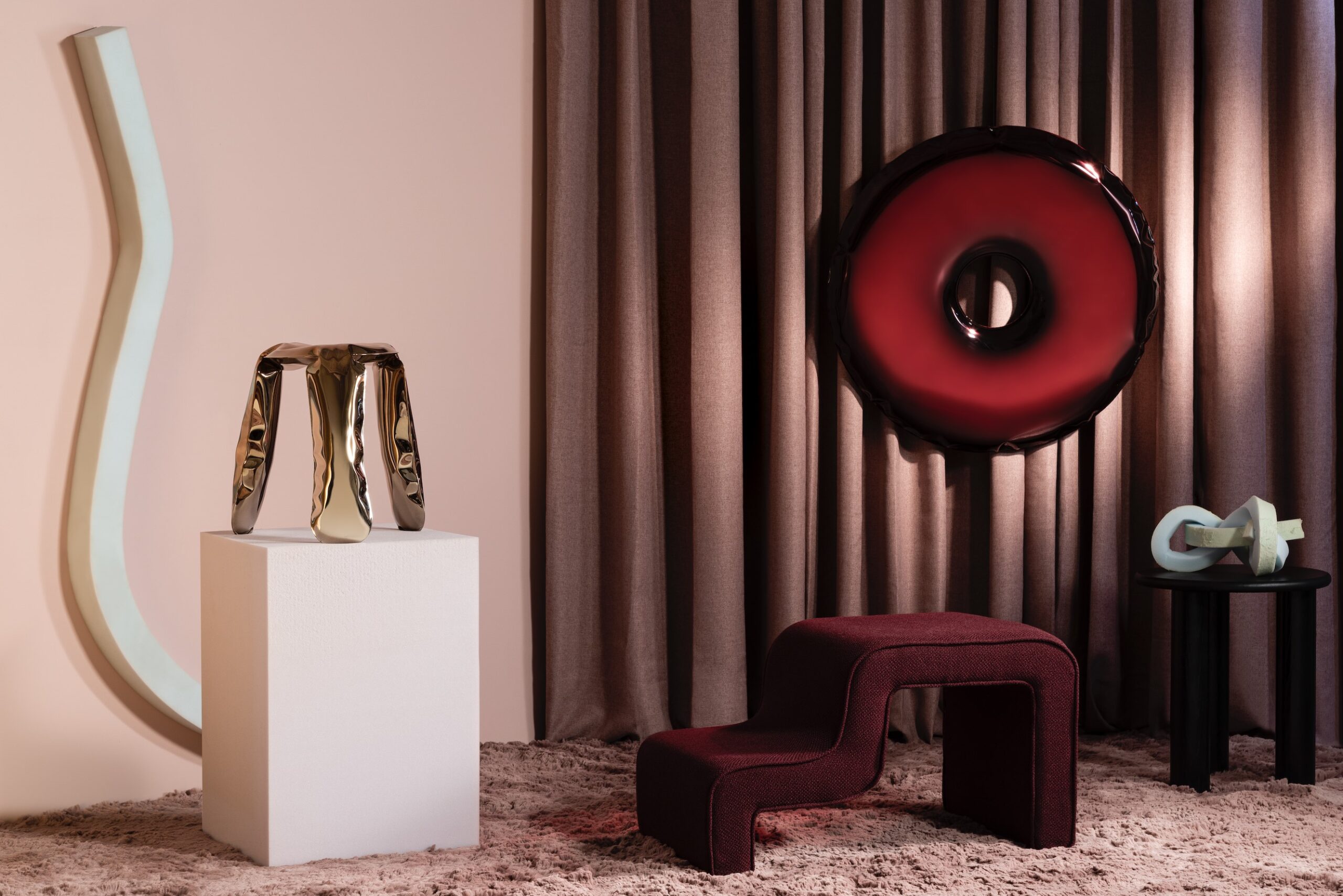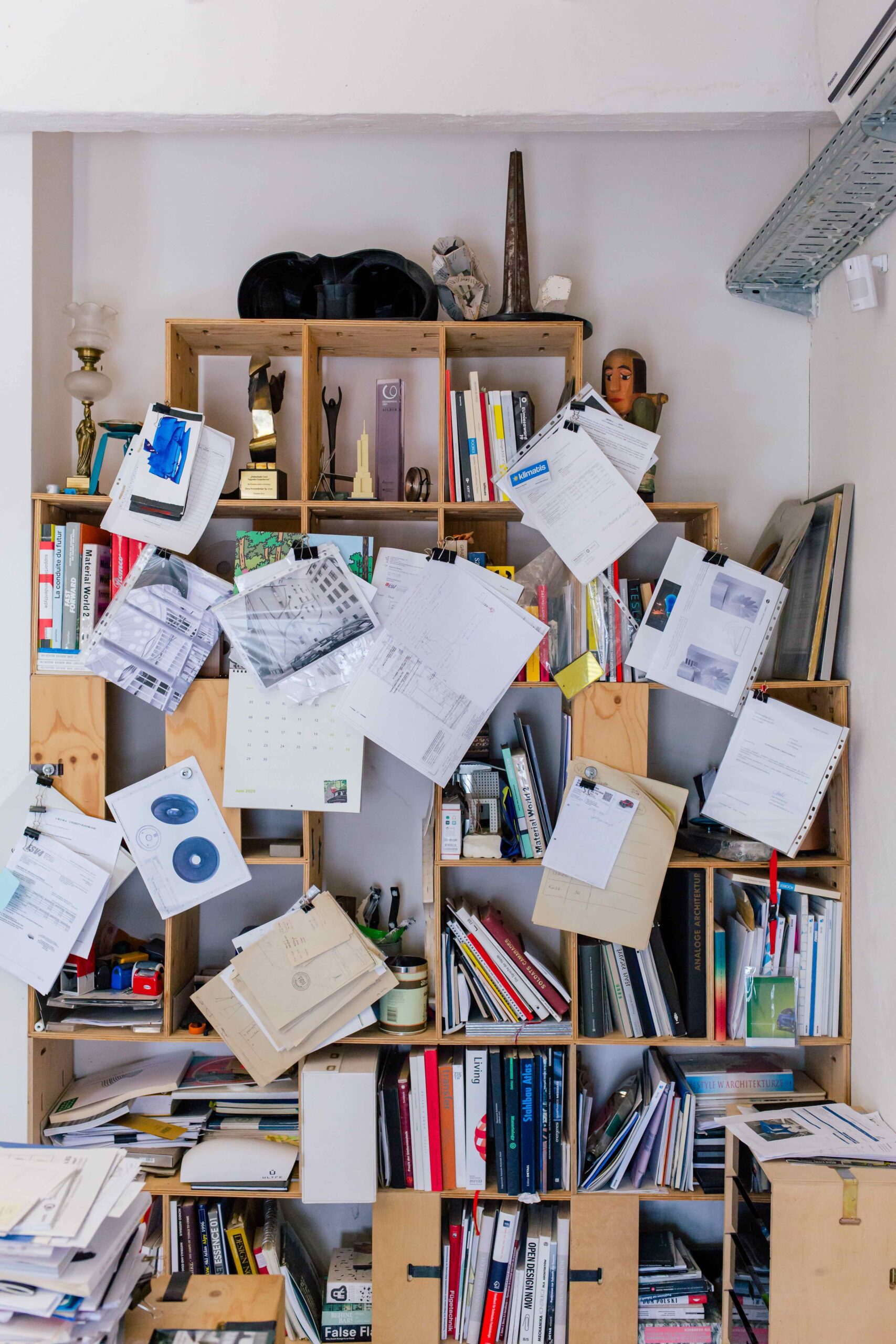Oskar Zięta’s discovery of a new process for inflating steel has led to a panoply of intriguing work. Now, hot on the heels of a London installation, he tells ICON how his repertoire continues to expand
 Photography by Weronika Trojanowska featuring Zieta Studio’s PLOPP stool flamed gold and RONDO red rubin
Photography by Weronika Trojanowska featuring Zieta Studio’s PLOPP stool flamed gold and RONDO red rubin
Words by Grant Gibson
Step into the world of Zieta Studio and two words immediately spring to mind: ‘playfulness’ and ‘joy’. The company, founded by Oskar Zięta in 2007, has made an international name for itself over the past two decades by developing a technique for inflating steel, which initially produced the delightful, cartoon-like three-legged stool PLOPP.
The Polish brand has had a long-term relationship with the London Design Festival, beginning in 2009 as part of the Young Creative Poland exhibition where the PLOPP Stool was unveiled, then in 2010 when it created Blow & Roll, a huge sculpture in the V&A’s John Madejski Garden using FiDU volumetric metal expansion.
Zieta Studio returned this year with Through Process to Progress, a six-week installation held at the Brompton-based store of ‘preloved’ fashion company Loop Generation – a project that heralds Polish and British creativity with partners Zieta Studio, BGY ID, On&On Designs, Let’s Art Foundation and the Polish Cultural Institute.
 Photography by The Sparkle Content Agency featuring Zieta Studio’s PLOPP STOOL
Photography by The Sparkle Content Agency featuring Zieta Studio’s PLOPP STOOL
The installation contained a fistful of products including the iconic PLOPP Stool, pieces from the dramatic mirror collection (presented in new colourway, jade) and a skateboard, alongside sculptural development works which really bring the volumetric expanding FiDU technology to life and include a full-size structure inspired by the ‘semi- inflated’ offcuts of the V&A 2010 installation.
On the stairs were three large words in inflated steel reading ‘Blown with Love’. However, while many of the pieces they produce are designed to engender a smile, it would be wrong to assume that Oskar and his wife, Agata Świderska-Zięta, are anything but deadly serious about their work. Oskar was studying for an architecture PhD at ETH Zurich when he developed the process.
As Agata explains: ‘He wanted to test and develop different methods of stabilising metal sheets and different types of steel for architecture – for structural pillars and supporting elements.’ Oskar adds: ‘I tried many, many different ideas to bring internal pressure into two pieces of metal sheet which were two-dimensional. And if you can put enough pressure inside, you can stabilise them and you can expand them. They can come from 2D into 3D.’
 Photography by Agata Maziarz
Photography by Agata Maziarz
Attempting to take experimental processes into architecture isn’t straightforward. Shigeru Ban, for instance, once constructed a house purely to prove it was possible to build with cardboard tubes. So, to show that his process could work, Oskar came up with PLOPP. ‘He presented it at different architecture and technological events and, unexpectedly and not intentionally, it became a design piece,’ remembers Agata.
Intriguingly, rather than handing over the piece to a major manufacturer, they elected – bravely but very sensibly – to keep everything in-house. Spool forward to today and Zieta Studio has a production workshop in Zielona Góra and HQ in Wrocław, western Poland, and an 80-strong staff, developing artworks, furniture, products – and, yes, pieces of architecture.
‘In the whole process, sometimes I’m a designer and sometimes an artist. And then I need to be the manager, engineer, technologist, even transport person. And very often a salesperson,’ Oskar smiles. Meanwhile, Agata is a lawyer, which is extremely useful when it comes to protecting IP across the globe. They’ve acquired plenty of knowledge of how different facets of a successful business function en route.
 Photography courtesy of Zieta Studio
Photography courtesy of Zieta Studio
‘We had to organise our own manufacturing because there was no other option,’ Agata explains. ‘We didn’t think too many steps ahead in terms of being a sales company. It came up because we had to organise everything. If you have products, you have to sell them. If you have to sell them, you have to do the marketing. We had to learn all the steps. And, simultaneously, we wanted to develop the technology. That’s why we tried to make new products, new ideas.’
And it’s noticeable that a recent chair, ULTRALEGGERA, is a more obviously refined – not to mention jaw-droppingly light – piece of work. It is, as Oskar points out, a chair designed to last for generations and become a family heirloom. As for the future? Well, the pair are intriguingly coy, but something significant is on the horizon. As part of the UK/ Poland Season 2025 (March to November), Zieta Studio will return to London and there are mutterings of an installation within the Fleet Street Quarter. Keep a very careful eye on them.
Get a curated collection of design and architecture news in your inbox by signing up to our ICON Weekly newsletter


















